Operators
 Austria-Hungary
Austria-Hungary
 Kingdom of Yugoslavia
Kingdom of Yugoslavia
- Yugoslav Royal Air Force - Postwar
class="infobox" style="width:25.5em;border-spacing:2px;"
| Aviatik (Berg) D.II | |
|---|---|
| Role | Fighter |
| National origin | Austria-Hungary |
| Manufacturer | Aviatik |
| First flight | summer 1917 |
| Primary user | Austro-Hungarian Imperial and Royal Aviation Troops |
| Number built | 13 |
| Developed from | Aviatik (Berg) D.I |
The Aviatik (Berg) D.II, the prototypes of which were known as Aviatik 30.22 and Aviatik 30.38, was an Austro-Hungarian sesquiplane fighter aircraft prototype towards the end of the First World War.
The D.II's fuselage was virtually identical to that of the D.I. It was characterised, however, by its short-span cantilever lower wing, which made it a sesquiplane. Through 1917, 19 D.IIs were built for front-line evaluation. The series 39 aircraft were powered by the 150 kW (200 hp) Austro-Daimler 200hp engine and the series 339 aircraft by the 168 kW (225 hp) Austro-Daimler 225 hp engine driving a four-bladed Jaray propeller and armed with the usual paired 8 mm (0.315 in) Schwarzlose machine guns. A further prototype, (30.38), was produced by fitting a 150 kW (200 hp) Hiero engine in a D.II airframe.
The first three production aircraft were tested in November 1917, and seven were evaluated at the front later in that year, showing good promise. However, the decision was made that Aviatik should instead produce the Fokker D.VII, and any plans to continue production of the D.II were halted.
Data from [1]
General characteristics
Performance
Armament
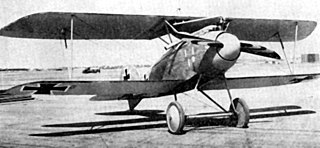
The Albatros D.III was a biplane fighter aircraft used by the Imperial German Army Air Service (Luftstreitkräfte) during World War I. A modified licensed version was built by Oeffag for the Austro-Hungarian Air Service (Luftfahrtruppen). The D.III was flown by many top German aces, including Wilhelm Frankl, Erich Löwenhardt, Manfred von Richthofen, Karl Emil Schäfer, Ernst Udet, and Kurt Wolff, and Austro-Hungarians like Godwin von Brumowski. It was the preeminent fighter during the period of German aerial dominance known as "Bloody April" 1917.
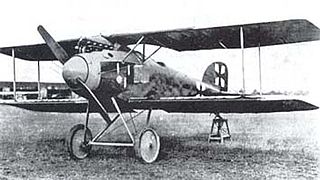
The Albatros D.II was a German fighter aircraft used during World War I. After a successful combat career in the early Jagdstaffeln, it was gradually superseded by the Albatros D.III.

The Fokker D.I was a development of the D.II fighter. The D.I was also flown in Austro-Hungarian service as a fighter trainer aircraft under the designation B.III. Confusing the matter further, both the D.II and D.I arrived at the Front in German service at similar times, in July–August 1916. The main designer was Martin Kreutzer.

The Aviatik (Berg) D.I, was a single-engine, single-seater biplane fighter that was developed and manufactured by the Austro-Hungarian branch of German aircraft company Aviatik. It was also known as Berg D.I or the Berg Fighter, because it was designed by Dipl. Ing. Julius von Berg, and to distinguish it from the D.I fighter built by the parent Aviatik firm in Germany.
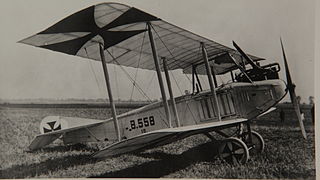
Note: Not to be confused with the Austro-Hungarian Aviatik B.II series 32, 32.7 and 34 which were different aircraft.

The Hansa-Brandenburg C.I, also known as Type LDD, was a 2-seater armed single-engine reconnaissance biplane designed by Ernst Heinkel, who worked at that time for the parent company in Germany. The C.I had similarities with the earlier B.I, including inward-sloping interplane bracing struts. Like other early-war Austro-Hungarian reconnaissance aircraft, such as C-types of Lloyd or Lohner, the Type LDD had a communal cockpit for its crew.
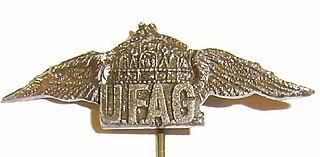
UFAG, was a Hungarian aircraft manufacturer formed by the Ganz Works and the Manfred Weiss Works in Budapest in 1912. They built aircraft of their own design as well as under licence from Lohner and Hansa-Brandenburg.
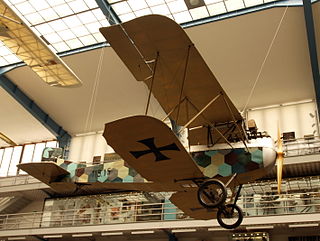
The Knoller C.II was a reconnaissance aircraft built in Austria-Hungary during World War I for use by the Austro-Hungarian army.
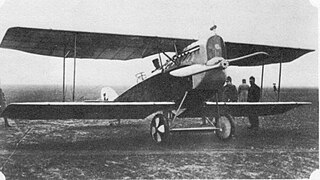
The Aviatik C.I, the prototypes of which were known as Aviatik 30.14, Aviatik 30.15 and Aviatik 30.16, was an Austro-Hungarian 2-seat reconnaissance aircraft produced from 1917.(Note: the is not part of the designation, but used to disambiguate from the German-built Aviatik aircraft with the same designation.)

The Phönix C.I, given serial numbers in the Phönix 121 range, was an Austro-Hungarian First World War reconnaissance and general-purpose Biplane built by Phönix and Lloyd.

The Lohner Type AA were a series of prototype fighters built during World War I. The program would eventually be cancelled due to inherent instability concerns of the design.

The Lloyd 40.08 Luftkreuzer was a three engine triplane bomber type built during World War I. The design was proven to be ineffective and development did not proceed past the prototype stage.

The Lloyd 40.05 was a very unorthodox experimental fighter/reconnaissance biplane produced by Lloyd (Ungarische Lloyd Flugzeug und Motorenfabrik AG / Magyar Lloyd Repülőgép és motorgyár Részvény-Társaság) in the Austro-Hungarian Empire during the First World War.

The Hansa-Brandenburg L.16, was an experimental triplane fighter that was designed in the Austro-Hungarian Empire during the First World War.
The Lloyd 40.15 was an experimental triplane fighter that was designed and built in the Austro-Hungarian Empire during World War I.
The Aviatik 30.24 was a prototype Austro-Hungarian triplane fighter built by Aviatik in World War I.
The Halberstadt C.IX was a German single-engined reconnaissance biplane of World War I, built by Halberstädter Flugzeugwerke. It was derived from the Halberstadt C.V, with a more powerful supercharged 230 hp Hiero engine.
The Knoller D.I series 70 was a prototype fighter aircraft built in the Austro-Hungarian Empire during World War I for use by the Kaiserliche und Königliche Luftfahrtruppen (KuKLFT).
The Hansa-Brandenburg C.II, company designation K,, was a two-seat reconnaissance aircraft built in Germany by Hansa-Brandenburg in World War I, powered by Mercedes D.III or Hiero 6 water-cooled in-line piston engines.
The Phönix 20.24 was a prototype German fighter plane built in the last months of World War I.